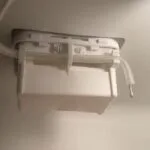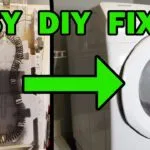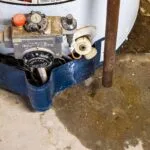To stop efflorescence on a garage floor, seal the surface and ensure proper drainage. Use a silane or siloxane-based sealer for best results.
Efflorescence, the white powdery substance that can appear on garage floors, is more than just an eyesore; it’s a sign of moisture issues. This crystalline deposit of salts often surfaces when water moves through a concrete slab, bringing salts to the surface as it evaporates.
Homeowners and builders seek effective strategies to prevent this phenomenon, not only to maintain the aesthetic appeal of their garage floors but also to protect the structural integrity of the concrete. Achieving this requires an understanding of the underlying causes of efflorescence and the implementation of preventive measures, such as sealing the concrete and improving drainage. By addressing these key factors, you can maintain a clean and durable garage floor free from the unsightly appearance of efflorescence.
Introduction To Efflorescence
Efflorescence can be a puzzling issue for garage floors. It’s that white, powdery substance that sometimes appears on concrete surfaces. Understanding efflorescence is key to stopping it.
What Is Efflorescence?
Efflorescence is a crystal-like deposit. It forms on porous building materials. It’s visible on concrete and brick surfaces. This includes garage floors. The substance is often white or grey.
Why It Occurs On Garage Floors
Garage floors face unique challenges. They get exposed to moisture and salts. When water evaporates from the concrete, it leaves behind salt deposits. This process causes efflorescence.
- Moisture: Comes from rain, spills, or humidity.
- Salt: Enters from deicing products or soil.
- Concrete: Porous and absorbs water and salt.
Prevention includes sealing and proper construction. Regular cleaning helps too. Fix moisture problems to keep floors dry. This stops efflorescence.
Early Signs And Diagnosis
Noticing a white, powdery substance on your garage floor? This could be efflorescence. It’s a common issue in concrete and masonry surfaces. Understanding early signs and diagnosis is key to stopping it.
Identifying Efflorescence
Look for white residue. This chalky powder is often efflorescence. It forms when water evaporates from your garage floor, leaving salt deposits behind.
- Check for a crystalline growth on the surface.
- Notice if the substance dissolves in water.
- See if it reappears after cleaning.
Assessing The Severity
Examine the spread of efflorescence. It indicates how much moisture is affecting your garage floor.
| Area | Severity |
|---|---|
| Small Patches | Mild |
| Widespread Coverage | Severe |
Consider moisture tests to measure the floor’s dampness. Use a professional kit or a simple plastic sheet test.
Preventive Measures
Stopping efflorescence on a garage floor begins with preventive measures. These steps keep your floor looking new and free from white, powdery marks. Let’s explore how to achieve this.
Proper Concrete Mixing
The right mix of concrete is crucial. It prevents efflorescence. Proper mixing ensures the concrete sets well. This reduces moisture and salt movement to the surface.
- Use less water: Too much water makes the problem worse.
- Quality cement: High-quality materials make stronger floors.
- Additives: Some additives reduce water absorption.
Adequate Waterproofing Techniques
Waterproofing is key to stopping efflorescence. It keeps water out. Here are ways to waterproof your garage floor:
- Seal cracks: Fill any cracks in the floor. This stops water from getting in.
- Use a sealer: Apply a waterproof sealer. It forms a barrier.
- Proper drainage: Ensure good drainage around your garage. This keeps water away from the floor.
Initial Cleaning Strategies
Combatting efflorescence starts with the right approach to cleaning. Over time, garage floors can develop a white, powdery residue. This is efflorescence, and it’s a sign of salt deposits left behind by water evaporation. To restore the floor’s appearance, initial cleaning is crucial. It lays the foundation for effective efflorescence prevention.
Choosing The Right Cleaning Solutions
Effective cleaning starts with the right products. Not all cleaners are safe for garage floors. It’s important to select a solution specifically designed to target efflorescence. A quality cleaner will remove salt deposits without damaging the concrete.
- Vinegar and water mix can gently dissolve salts.
- Commercial efflorescence removers offer more power.
- Always test cleaners in a small area first.
Manual Cleaning Vs. Pressure Washing
There are two main ways to tackle the cleaning: manual or pressure washing. Each has its own benefits.
| Method | Pros | Cons |
|---|---|---|
| Manual Cleaning |
|
|
| Pressure Washing |
|
|
Consider the floor’s condition before choosing a method. Pressure washing offers a deep clean for stubborn efflorescence. Manual cleaning allows for more control and is less likely to harm the floor.
Long-term Solutions
Efflorescence on a garage floor is unsightly. It can weaken concrete. Understanding how to prevent it is key. Below are lasting solutions.
Sealing The Concrete
Sealants block moisture. They prevent efflorescence. Choose a high-quality concrete sealer. Apply it properly for best results. Sealers come in different types:
- Acrylics
- Epoxy
- Penetrating sealers
Test your concrete before sealing. Ensure it is clean and dry. Follow manufacturer instructions for application. Reapply as needed over time.
Improving Drainage And Ventilation
Good drainage moves water away from the garage. Ventilation helps it dry out. Together, they fight efflorescence. Consider these steps:
| Action | Benefit |
|---|---|
| Install proper gutters | Redirects rainwater |
| Add a slope to the floor | Drains standing water |
| Use dehumidifiers | Reduces moisture in air |
Regularly check and maintain these systems. Keep your garage dry. This will protect your floor long-term.

Credit: ghostshield.com
Commercial Products And Their Application
Fighting efflorescence on a garage floor takes effort and knowledge. Commercial products offer a solution. They are easy to apply and work well.
Sealers And Coatings
To protect your garage floor, consider sealers and coatings. They block moisture. This stops efflorescence from starting. Apply them correctly for the best results.
- Epoxy sealers: Tough and durable. Great for heavy use areas.
- Acrylic sealers: Easy to apply. Good for quick fixes.
- Urethane coatings: Resist scratches. Keep floors looking new.
Before applying, clean the floor well. Make sure it’s dry. Follow the product’s instructions.
Anti-efflorescence Products
Some products target efflorescence directly. They remove salts and stop new growth.
- Efflorescence removers: Clean existing salts. Prep the floor for sealing.
- Water repellents: Stop water from entering. Reduce efflorescence risk.
For best results, apply these products after cleaning. They keep your floor safe and clean.
Professional Remediation
Professional Remediation is a critical step for garage floors suffering from efflorescence.
It involves specialized techniques to halt the white, powdery residue. Experts can deliver lasting solutions. Home remedies might not be enough for severe cases.
When To Call The Experts
- Stubborn Efflorescence: Residue keeps returning after cleaning.
- Widespread Coverage: Large areas of the garage floor are affected.
- Structural Concerns: Worried about the integrity of the concrete.
- Time Constraints: Quick and efficient resolution required.
What To Expect From Professional Services
Opting for professional services ensures a comprehensive approach.
| Step | Description |
|---|---|
| Assessment: | Experts evaluate the severity and cause. |
| Cleaning: | Specialized tools remove efflorescence. |
| Treatment: | Professionals apply sealants and barriers. |
| Maintenance Plan: | Guidance on preventing future issues. |
Professionals ensure the use of correct products and procedures. They guarantee safety and durability. You can expect tailored solutions based on your garage’s specific needs.
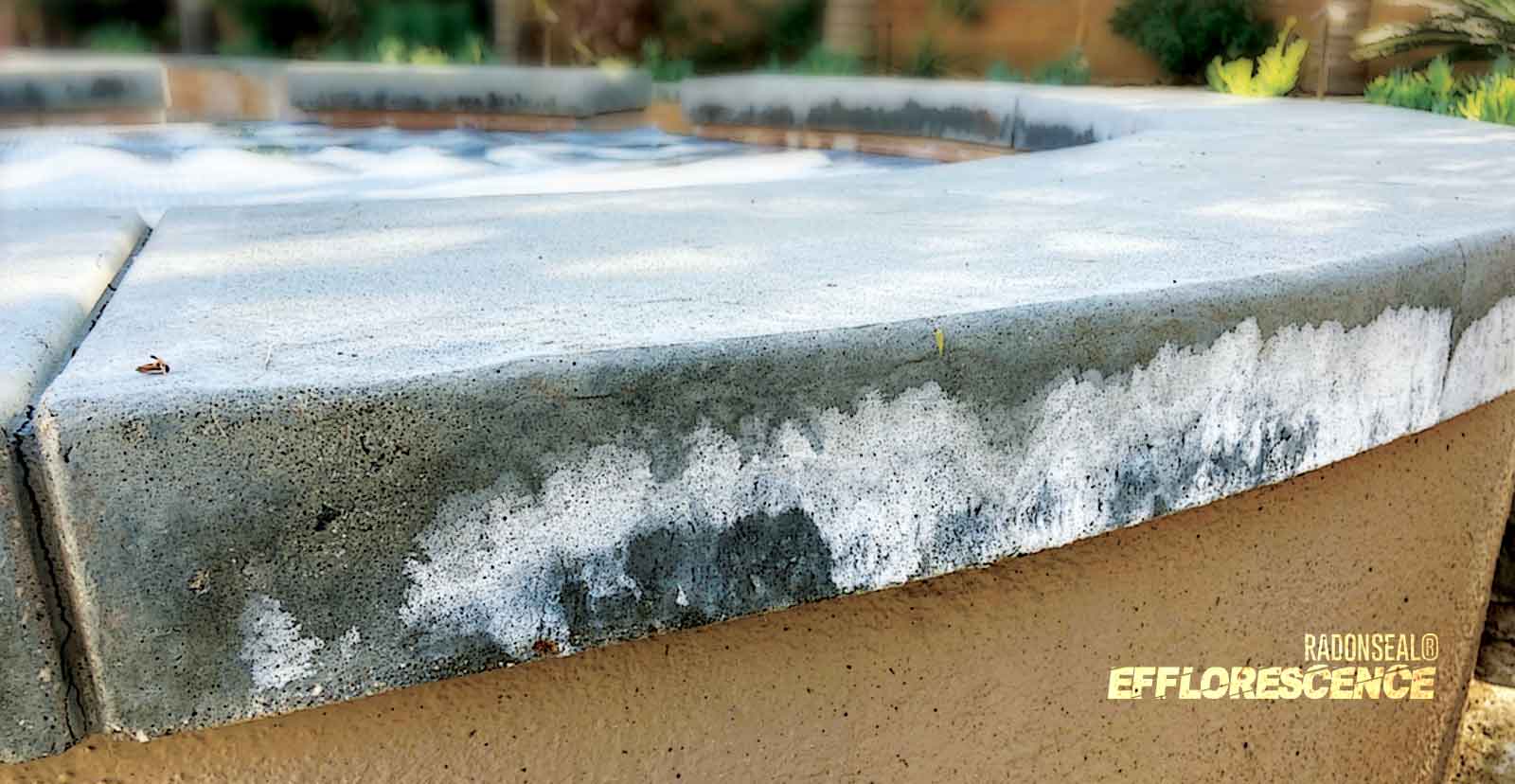
Credit: www.radonseal.com
Maintenance Tips To Keep Efflorescence At Bay
Efflorescence on a garage floor can be a persistent issue. The white, powdery residue not only affects the appearance of your garage but can also indicate deeper moisture problems. To prevent this unsightly buildup, maintenance is key. Below are effective tips to keep efflorescence at bay.
Regular Inspection And Cleaning
Regular checks are essential for a healthy garage floor. Spot signs of efflorescence early. Swift action can stop spread. Use a stiff brush and mild detergent for cleaning. Rinse thoroughly after. This removes salts before they crystalize.
- Check for cracks or signs of damage.
- Clean spills immediately to prevent seepage.
- Dry mop regularly to pick up dust and salts.
Monitoring Humidity And Temperature
Control the environment in your garage. Balance humidity and temperature to prevent efflorescence. Use dehumidifiers to reduce moisture. Keep the space well-ventilated. Seal the floor with a silane-based sealant. This creates a barrier against moisture.
| Task | Frequency |
|---|---|
| Inspect garage floor | Monthly |
| Clean garage floor | Weekly |
| Check humidity levels | Daily |
Case Studies And Success Stories
Discover how homeowners have battled efflorescence on their garage floors. Real-life cases reveal the effectiveness of various solutions. Witness the transformations and read firsthand accounts.
Before And After Scenarios
Efflorescence, a pesky white powder, can ruin a garage’s look. But not all hope is lost. See the before and after results that homeowners achieved.
| Scenario | Before | After |
|---|---|---|
| John’s Garage | White residue everywhere | Clear, pristine concrete |
| Lisa’s Parking Space | Chalky, dusty floor | Smooth, clean surface |
| Anderson’s Workshop | Stubborn efflorescence | Long-term protection |
Testimonials From Homeowners
- John D. – “I was stunned. My garage looks new!”
- Lisa R. – “No more white powder. It’s truly amazing!”
- Anderson P. – “Finally, a lasting solution. Highly recommend!”
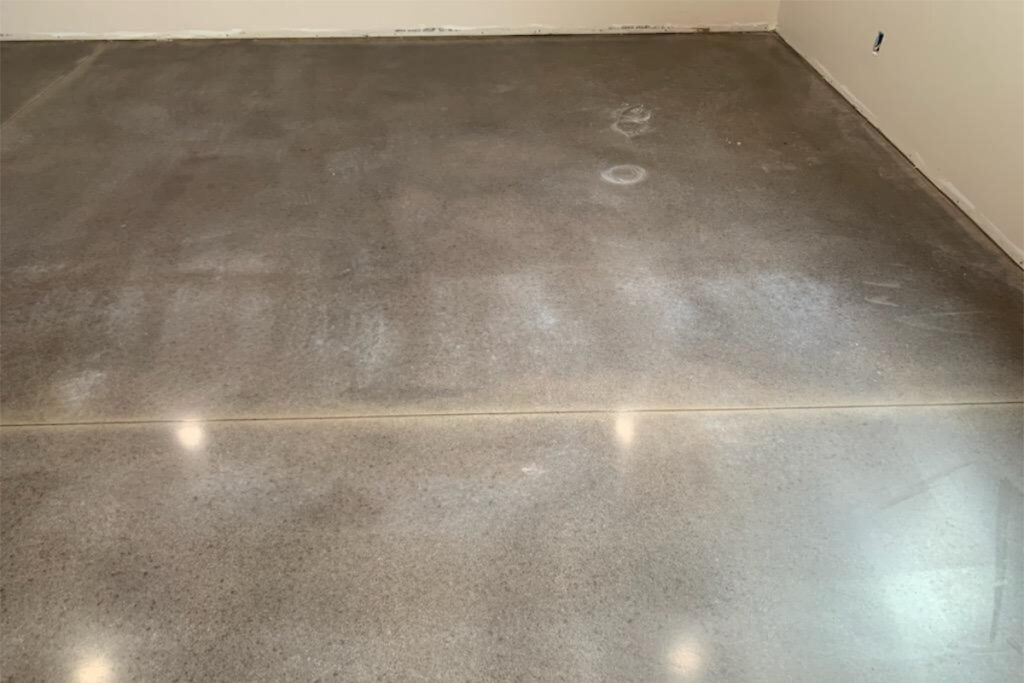
Credit: dancerconcrete.com
Frequently Asked Questions
What Causes Efflorescence On Garage Floors?
Efflorescence on garage floors is caused by moisture drawing salts from within the concrete to the surface, where they crystallize and form white powdery deposits.
Can Sealing Prevent Garage Floor Efflorescence?
Sealing the garage floor can significantly reduce efflorescence by creating a barrier that inhibits moisture from reaching the surface and reacting with concrete salts.
How Do You Remove Efflorescence From Concrete?
To remove efflorescence, use a stiff brush and a mild vinegar solution to scrub the surface gently, then rinse thoroughly with clean water.
Is Efflorescence A Sign Of Concrete Damage?
Efflorescence itself does not damage concrete, but it can indicate excess moisture that could potentially lead to deterioration over time.
Can Efflorescence Recur After Treatment?
Yes, efflorescence can recur if the underlying moisture issue isn’t resolved, as the process is driven by moisture movement through the concrete.
Conclusion
Tackling efflorescence on your garage floor need not be daunting. By employing the right sealants and maintaining a dry environment, you can bid farewell to those pesky white deposits. Remember, regular checks and swift action keep your garage pristine. Embrace these tips, and enjoy a spotless floor for years to come.


